The first of Triumph’s unit-construction twins provided practical transport 40 years ago. These days, the 350 performs best on gentle weekend rides…
Geoff Painter bought his 3TA, aka the Triumph Twenty-one, in 1967 when it was just two years old. The 350 twin was supplied to Elite Motors in July of 1964 but wasn’t sold or registered until the following year, which reflects the fact that the ‘touring’ models with their sweeping bodywork proved less popular as the 1960s progressed.
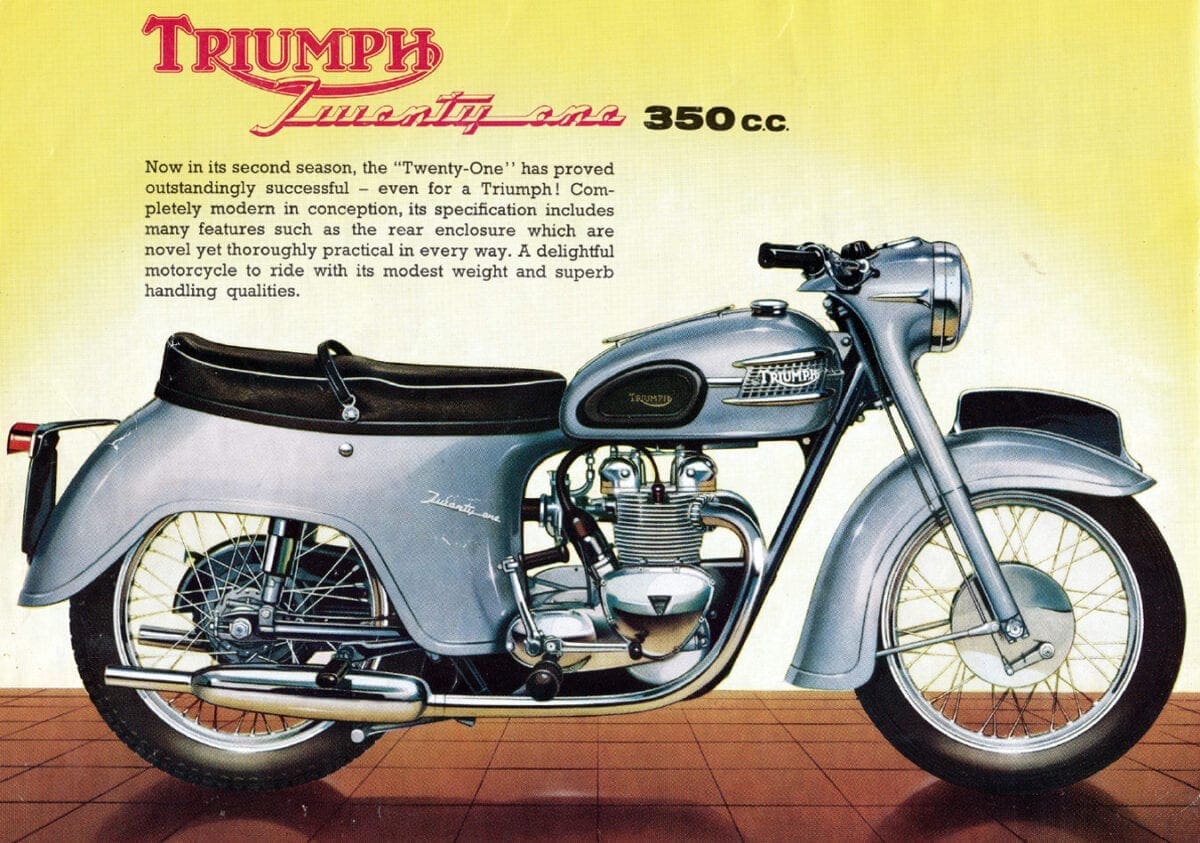
In the late 1950s, Triumph clad their Cub, 3TA and 5TA machines in full enclosures which then shrank back to the rear enclosure as seen on Geoff’s bike. The final incarnation of the 3TA just kept the iconic Triumph headlamp nacelle, ditching the bathtub and even the flared front mudguard in an effort to attract the attention of the sporting rider. Geoff’s bike was one of the in-between models which feature a ‘bikini’ rather than the full bathtub.
‘It was in very nice condition when I got it’ says Geoff, ‘but it had only been on the road for two years at that time’. He paid £120 for the 3TA; it would have cost around £280 new in 1965. Triumph reckoned that the 3TA was worth that price as it was ‘the most coveted 350 on the road today’ thanks to its ‘crisp performance with the highest possible degree of silence and refinement.’
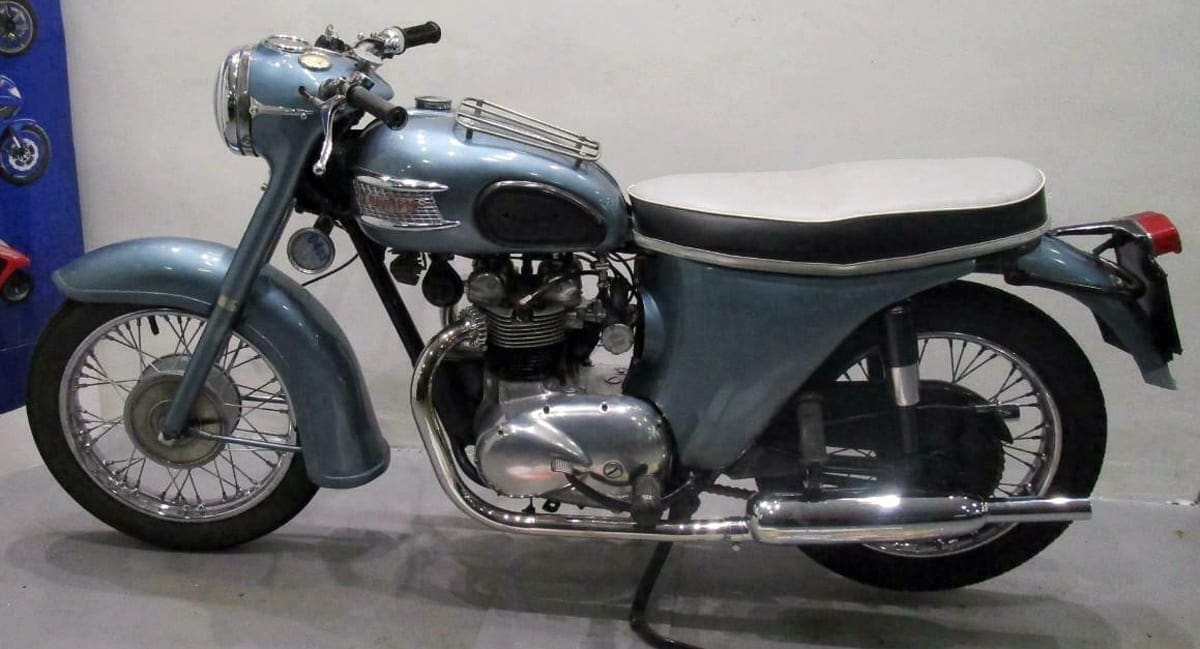 Stafford Motorcycles listed this 1963 3TA for sale at £4495 in the summer of 2020. It’s had three previous owners, starts and runs well, comes with original logbook and matching numbers. The paint has been refreshed during its lifetime, but the tinware is apparently in good nick
Stafford Motorcycles listed this 1963 3TA for sale at £4495 in the summer of 2020. It’s had three previous owners, starts and runs well, comes with original logbook and matching numbers. The paint has been refreshed during its lifetime, but the tinware is apparently in good nick
The 348cc air-cooled parallel twin was certainly ground-breaking, being the first Triumph unit-construction engine, but it changed very little over its decade in production apart from the evolution of its styling. Mechanically, the overhead valve cast iron engine with its alloy head and separate rocker boxes, dry sump lubrication with twin-plunger oil pump, duplex-chain primary drive, single Amal Monobloc carb and four-speed foot-operated gearbox stayed much the same. The 3TA also kept its seven-inch single leading shoe brakes throughout its life.
The frame was modified in 1960 when the steering head angle changed so ground clearance improved by an inch and the seat height rose to 30 inches; shorter riders would prefer the initial models which also used 17-inch wheels rather than the 18-inch ones fitted to the later models. The bike’s mass remained constant at 340lb.
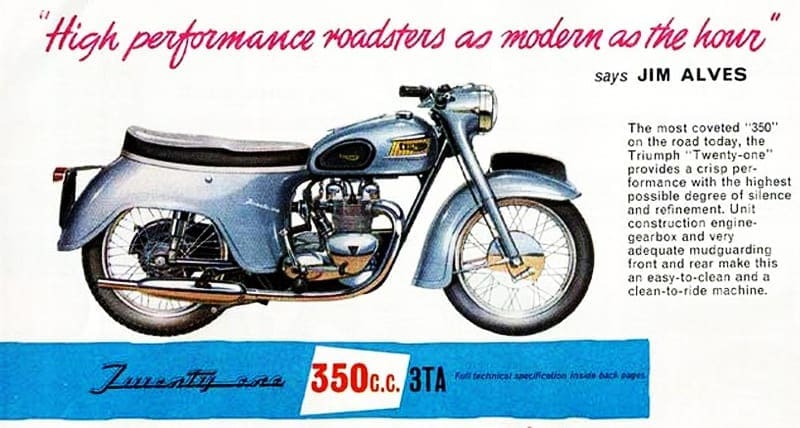 ‘The most coveted 350 on the road today,’ claims the advert; ‘crisp performance with the highest possible degree of silence and refinement’
‘The most coveted 350 on the road today,’ claims the advert; ‘crisp performance with the highest possible degree of silence and refinement’
The 3TA was reasonably peppy and practical when it was introduced in 1957 (the Twenty-one name celebrates the Triumph Engineering Company’s 21st birthday). Motor Cycling magazine reported that it was one of the fastest standard British 350 roadsters with an ‘untiring zest’ for high speed cruising, safe handling and remarkably economical fuel consumption. Not everyone liked it that much, however; ‘the Twenty-one was a bland-looking motorcycle that came over as a diminished version of the traditional Triumph,’ said Cyril Ayton, ‘while falling short of presenting the integrated look of even the humblest scooter.’
The 18bhp 350 was capable of reaching 80mph – just – but in truth the fast rider was more likely to buy a 500. Dave Minton recalls that ‘given a ruthless pilot, a hard-pressed Twenty-one would manage 75mph but any attempt to change direction hard and fast, or even hold the line along an undulating road, would cause the kind of nasty loss of stability that can only ever be a consequence of a weak frame.’
So the 3TA tended to sell steadily thanks to its fuel economy (75mpg was perfectly possible), good weather protection and ease of maintenance. Triumph even sold it on those grounds as an ‘easy to clean and clean-to-ride machine’. Perfect for the daily grind, then…
And that’s just what happened to Geoff’s 3TA. It got ground down over years of use and then neglect. Geoff and his brother took turns in owning it, and Geoff used it for commuting 50 miles each day in the mid-1970s. ‘By 1977 it was worn out’ says Geoff, ‘and my brother had it back with the intention of restoring. Other things got in the way, so I had it back again in late 1982 but it continued rusting away for nearly six more years until restoration began in late 1988.’
The restoration work was done by marque expert Hughie Hancox at a cost of £2600 – that was three decades ago and a substantial sum at the time (the same money would have bought a brand new Honda 250, for instance). There was a lot of work involved, though, to resurrect the ‘rusty, clapped-out’ Triumph, including a rebore and new wheels. Geoff reports that the wheels have lasted brilliantly; ‘stainless rims from the Devon Rim Company are superb’ although other bits of the bike have needed some attention in the past two decades. He’s spent another £600 or so on items like new pistons, stainless shock absorber shrouds and such.
These days (summer 2020), you’ll be able to buy a complete non-runner for around £2500. Roadgoing examples start at £3500 from private sellers and dealers ask up to £5000 for 3TAs which have been totally restored and are immaculately presented.
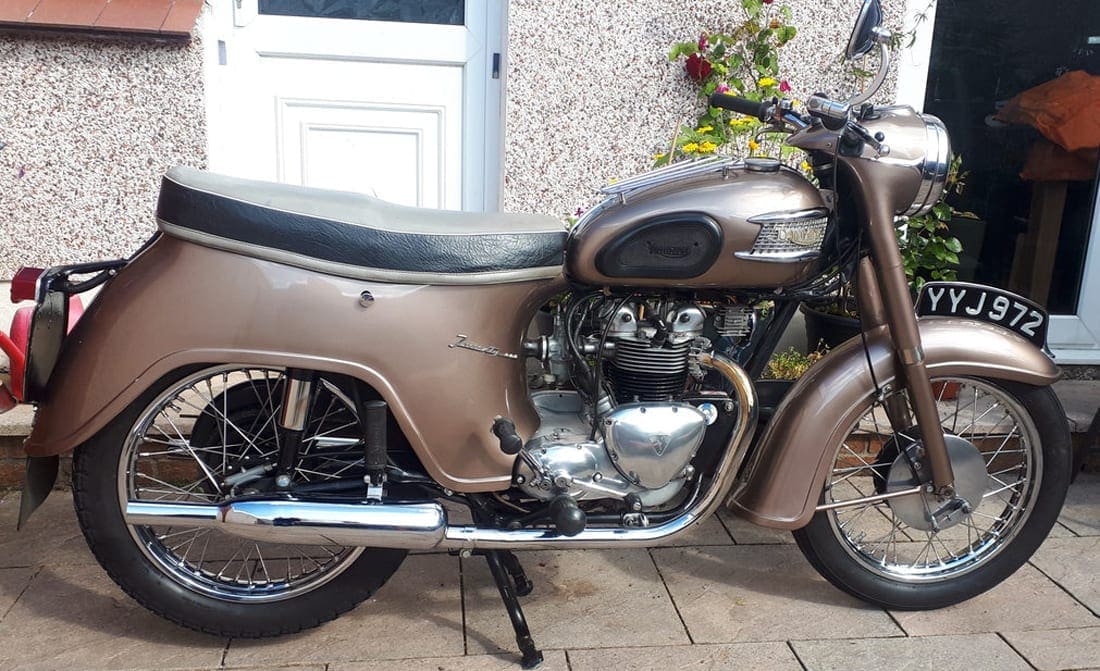 This 1958 3TA was offered for sale in summer 2020 at £3750. It’s had stacks of stuff done – SRM rebore, new clutch, chains and carb, Morgo oil pump, 12V alternator overhaul and reg/rec, etc – and has covered 17k miles (since the rebuild? Since 1958? Who knows?)
This 1958 3TA was offered for sale in summer 2020 at £3750. It’s had stacks of stuff done – SRM rebore, new clutch, chains and carb, Morgo oil pump, 12V alternator overhaul and reg/rec, etc – and has covered 17k miles (since the rebuild? Since 1958? Who knows?)
Geoff has resisted the temptation to adapt or modify his 3TA much. ‘It’s in standard condition’ he explains, ‘apart from a handlebar-mounted air lever which replaces the bent-wire original choke. This was on the bike when I first bought it in 1967 so has been kept as a “period accessory”. The same goes for the Stadium bar-end mirror.
‘The Triumph gets used every year so has developed a few minor scuffs and dents. The only way to address these would be another cosmetic restoration, but I like it the way it is.’
Since its restoration the 3TA has covered nearly 5000 miles. There were some teething troubles at the start; ‘all the lights blew and the battery blew up when the lights were switched on. It was traced to faulty, original light switch.’ Since then the 3TA has been ‘100% reliable. It really impresses me every year when it starts first kick after the winter lay-up – which can be eight months long!’
Geoff’s happiest moment with the 3TA came when it first took to the road after its initial restoration back in 1989. ‘I could not get the smile off my face! It had been off the road since 1977 and it was wonderful to have it running again and looking like new.’
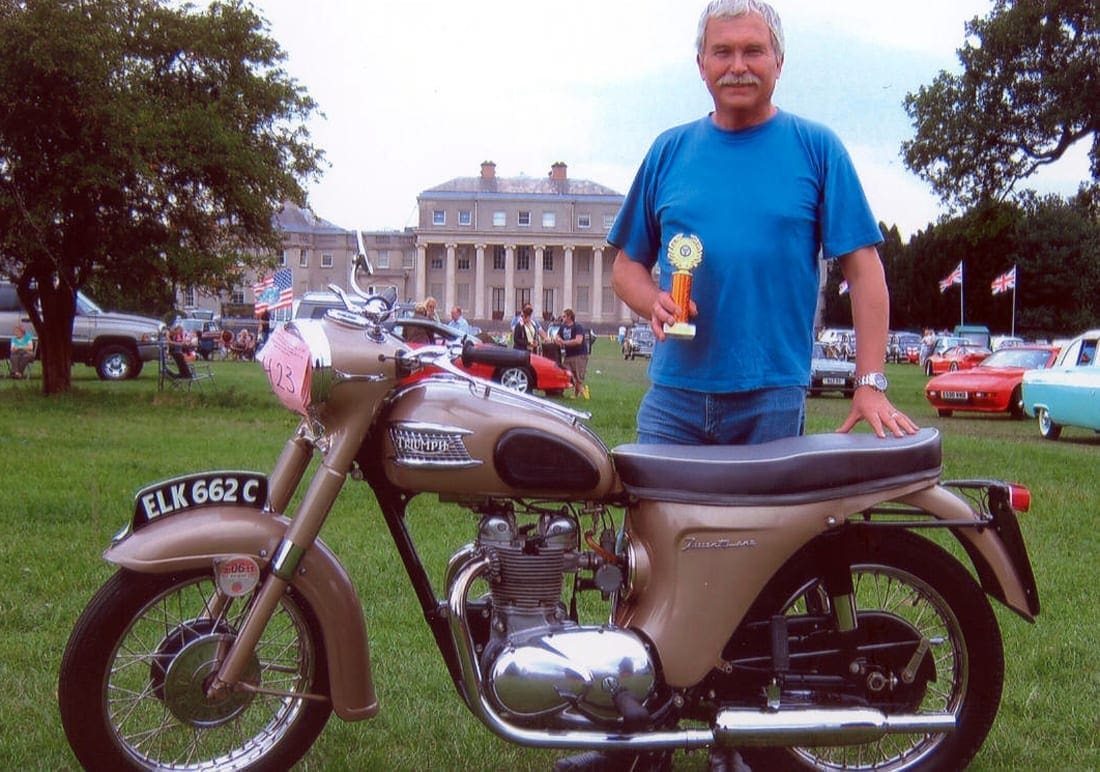
The 3TA still attracts attention has won numerous awards. Geoff reckons that this model is an ideal classic for anyone looking to try an old Triumph for the first time; ‘don’t hesitate, but don’t expect it to go like a Bonneville!’
———
Triumph’s 350 twins have been frequently featured in the monthly RealClassic magazine. There’s a 350 special featured in RC185, Sept19 issue; available by mail order or digital download.
And in RC76 we featured the military version of the 3TA, supplied to the Dutch Army in the 1960s. That article can be read in back issues of the June 2011 magazine, available here.
This feature first appeared on the original RealClassic website more than a decade ago: it’s been updated and extended to appear here in our new format
Words: Rowena Hoseason
Photos: Geoff Painter / RC RChive




